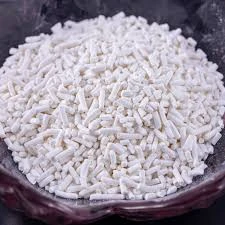
polar aprotic solvents sn2
The Role of Polar Aprotic Solvents in SN2 Reactions
The field of organic chemistry is replete with a variety of reactions that play crucial roles in the synthesis of complex molecules. Among these, the bimolecular nucleophilic substitution, or SN2 reaction, stands out for its simplicity and efficiency. One of the key factors influencing the rate and success of SN2 reactions is the choice of solvent. In this context, polar aprotic solvents have garnered particular attention due to their unique properties and effects on reaction kinetics.
Polar aprotic solvents, as opposed to protic solvents, are characterized by their ability to solvate cations effectively while providing minimal interaction with anions. This property is primarily due to the absence of hydrogen bonding involving acidic protons. Common examples of polar aprotic solvents include dimethyl sulfoxide (DMSO), acetone, and acetonitrile. These solvents play a crucial role in stabilizing the charged transition states that arise during SN2 reactions, thereby enhancing the overall reaction rate.
One of the primary reasons polar aprotic solvents are favored in SN2 reactions is their ability to solvate cations. When a nucleophile approaches the substrate, it forms a transition state in which the nucleophile partially bonds to the electrophile while simultaneously displacing a leaving group. In an environment rich in polar aprotic solvents, the nucleophile remains relatively naked, or unsolvated. This is advantageous because an unsolvated nucleophile is more nucleophilic and thus reacts more quickly with the electrophile.
polar aprotic solvents sn2

In contrast, protic solvents tend to stabilize both the nucleophile and the leaving group through hydrogen bonding and ion-dipole interactions. This solvation hampers the nucleophile's ability to engage with the substrate due to the formation of a solvation shell, which effectively masks the nucleophile's reactivity. Therefore, while protic solvents can stabilize the transition state, they may also slow down the overall reaction by dampening the nucleophile's activity.
The selectivity of polar aprotic solvents extends beyond just nucleophile enhancement; they also affect the leaving group’s reactivity. In SN2 reactions, better leaving groups are typically weak bases, which can be more effectively stabilized by the polar aprotic solvent. Because these solvents enhance the ability of the leaving group to dissociate without forming strong interactions with solvent molecules, they further promote the likelihood of substitution reactions.
Experimental evidence supports the theoretical understanding of polar aprotic solvents in SN2 mechanisms. Numerous studies have demonstrated that reactions conducted in such solvents routinely yield higher rates and better yields than those performed in protic solvents. For instance, the reaction of sodium iodide with 1-bromobutane shows significantly increased reaction rates in DMSO compared to water.
In summary, polar aprotic solvents serve a crucial function in facilitating SN2 reactions. By effectively solvating cations while allowing nucleophiles to remain reactive, these solvents create an environment conducive to swift reaction kinetics. Their unique properties not only enhance the nucleophilicity of attacking species but also improve the rate of substitution reactions by stabilizing the transition states selectively. As organic chemists continue to explore the vast landscape of chemical reactions, the role of solvents, particularly polar aprotic ones, will undoubtedly remain a vital area of research and application.
-
PE and PP Plastics with Benzotriazole AdditivesNewsJun.12,2025
-
How Glacial Acetic Acid Balances pH to Combat Food SpoilageNewsJun.12,2025
-
Food Additives in China: Embracing the GreenNewsJun.12,2025
-
Cyanide Mining Gold Extraction and the Rise of Complementary ChemicalsNewsJun.12,2025
-
Ammonium Nitrate in Pharmaceutical ManufacturingNewsJun.12,2025
-
Aluminum Hydroxide in Glass and Ceramics ManufacturingNewsJun.12,2025
-
Mining Chemicals: Cyanide in Gold MiningNewsJun.04,2025
Hebei Tenger Chemical Technology Co., Ltd. focuses on the chemical industry and is committed to the export service of chemical raw materials.
-

view more DiethanolisopropanolamineIn the ever-growing field of chemical solutions, diethanolisopropanolamine (DEIPA) stands out as a versatile and important compound. Due to its unique chemical structure and properties, DEIPA is of interest to various industries including construction, personal care, and agriculture. -

view more TriisopropanolamineTriisopropanolamine (TIPA) alkanol amine substance, is a kind of alcohol amine compound with amino and alcohol hydroxyl, and because of its molecules contains both amino and hydroxyl. -

view more Tetramethyl Thiuram DisulfideTetramethyl thiuram disulfide, also known as TMTD, is a white to light-yellow powder with a distinct sulfur-like odor. It is soluble in organic solvents such as benzene, acetone, and ethyl acetate, making it highly versatile for use in different formulations. TMTD is known for its excellent vulcanization acceleration properties, which makes it a key ingredient in the production of rubber products. Additionally, it acts as an effective fungicide and bactericide, making it valuable in agricultural applications. Its high purity and stability ensure consistent performance, making it a preferred choice for manufacturers across various industries.











